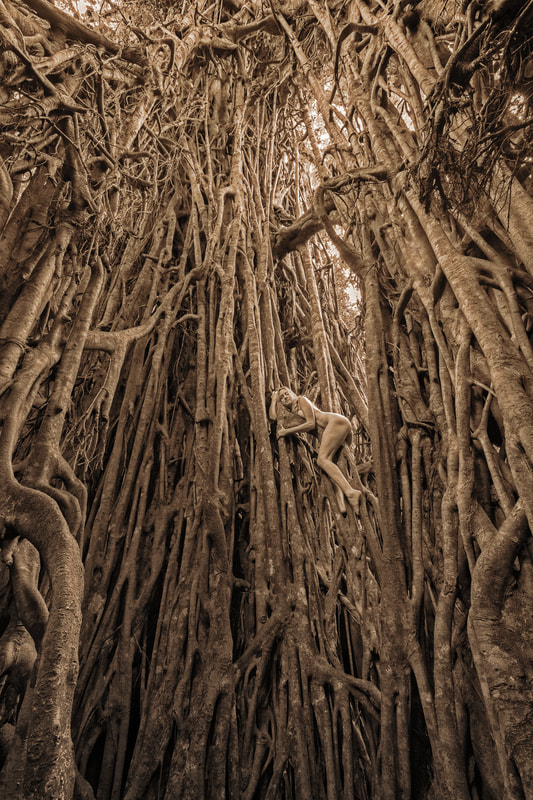Green Fig – Ficus virens
Natural History
|
Other Names: White Fig (because of its white fruit), an-borndi (Gun-djeihmi), Yawurru (Wunambal Gaambera).
Distinctive Characteristics: Ficus virens is one of the rare deciduous trees in the rainforest. It can stand alone as a single-trunk tree, or grow as a parasitic strangler fig with many aerials. Strangler figs begin as epiphytes at the top of a host tree when a seed is pooped out from a bird or bat. They then germinate and send aerial roots down to the earth to bring up nutrients. Over time, the aerial roots encircle and smother the host tree, out-competing it for nutrients and light, eventually killing it. Distribution: Native to northern Australia, India, China, Japan, Southeast Asia, Malaysia, New Guinea, and the Solomon Islands. Elevation: 900–9,000 ft. (300–2,700 m). Ecosystem: Monsoon forests, tropical lowland rainforests, and along streams. In Queensland, Australia, some trees share their home in the endangered mabi rainforest with Brush Mahogany, Black Bean, Candlenut, Queensland Maple, Red Cedar, and Red Tulip Oak. Epiphytes, such as a variety of ferns, make their home high in the tree's canopy. Maximum Age: Over 500 years. Maximum Height and Girth: 164 ft. (50 m) in height; the true circumference is tricky to determine on strangler figs because of the arial roots, however, one Green Fig in New South Wales, Australia, appears to be solid at 101.7 ft. (31 m). Single-trunked trees have been measured at 62.3 ft. (19 m) in circumference. Animal Community: A wide range of birds, insects, bats, and other mammals eat the fruit. In Australia this includes Papuan frogmouths, rose-crowned fruit doves, emerald fruit doves, grey-headed robins, orange-footed scrubfowls, leaftailed geckos, Lumholtz's tree kangaroos, common brushtail possums, and green ringtail possums. Like all species of figs, there is one species of wasp that will fertilize the flowers. Traditional Uses: There were most likely many traditional uses of this tree. Medicine: A decoction of the bark was used as an injection in the treatment of leucorrhoea, as a wash on skin ulcers, and as a gargle, while a bark extract mixed with other plants was given for bone fractures. Food: The fruits are edible, although not favorable. Young shoots and young leaves are eaten raw or cooked. The leaves, boiled and used in curries, are known in Thai cuisine as phak lueat. Fiber: The inner bark was used to make rope. Modern Uses: The latex is used for caulking boats and waterproofing. The wood, including the aerial roots, is used locally in light construction and tool making. Threats and Conservation: Not threatened. |
|


